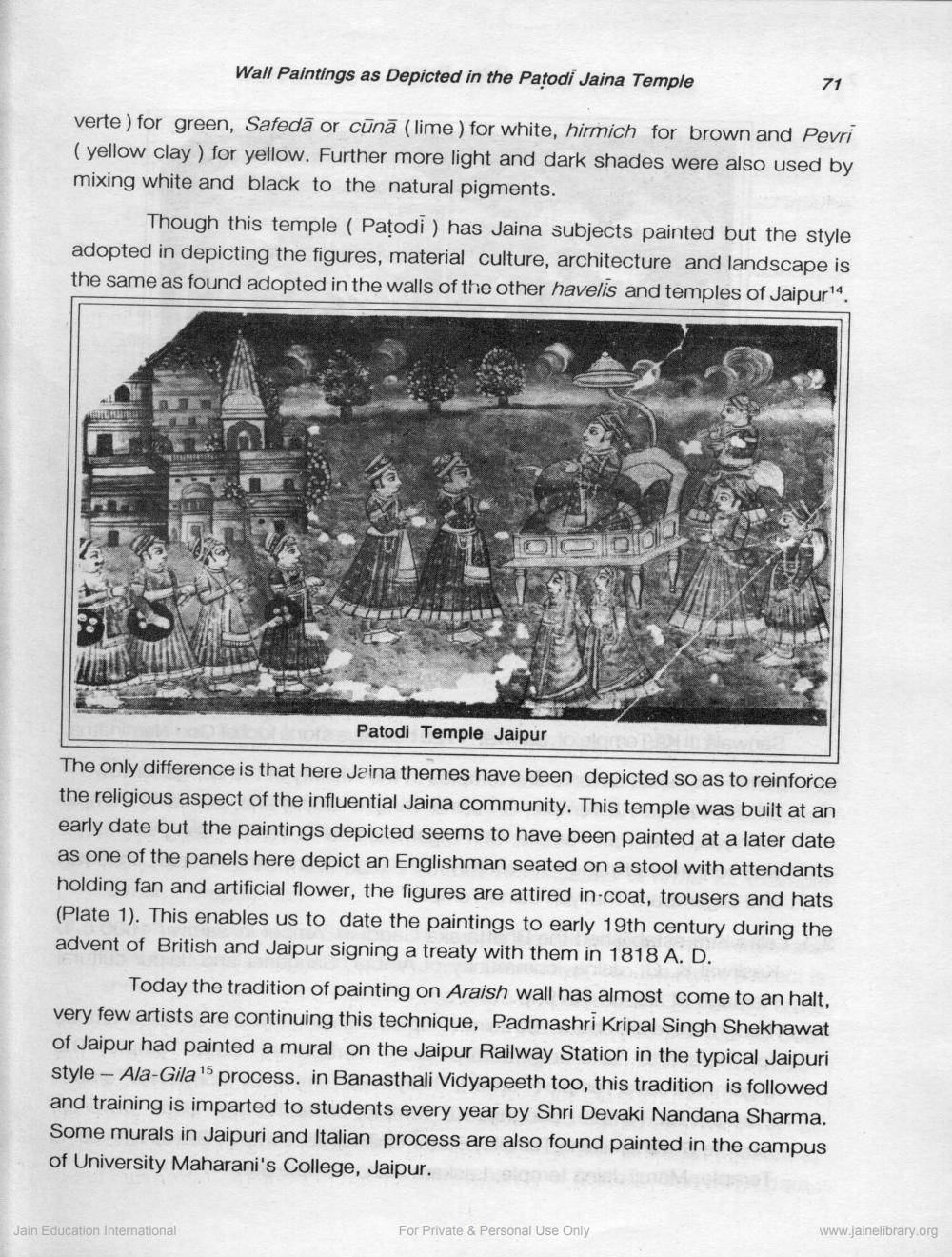Book Title: Wall Paintings as depicted-in the Patodi Jaina Temple Jaipur Author(s): Rita Pratap Publisher: Z_Parshvanath_Vidyapith_Swarna_Jayanti_Granth_012051.pdf View full book textPage 4
________________ Wall Paintings as Depicted in the Patodi Jaina Temple verte) for green, Safeda or cünä (lime) for white, hirmich for brown and Pevri (yellow clay) for yellow. Further more light and dark shades were also used by mixing white and black to the natural pigments. Though this temple ( Patodi) has Jaina subjects painted but the style adopted in depicting the figures, material culture, architecture and landscape is the same as found adopted in the walls of the other havelis and temples of Jaipur14. Slad 71 34 Patodi Temple Jaipur The only difference is that here Jeina themes have been depicted so as to reinforce the religious aspect of the influential Jaina community. This temple was built at an early date but the paintings depicted seems to have been painted at a later date. as one of the panels here depict an Englishman seated on a stool with attendants holding fan and artificial flower, the figures are attired in-coat, trousers and hats (Plate 1). This enables us to date the paintings to early 19th century during the advent of British and Jaipur signing a treaty with them in 1818 A. D. Jain Education International Today the tradition of painting on Araish wall has almost come to an halt, very few artists are continuing this technique, Padmashri Kripal Singh Shekhawat of Jaipur had painted a mural on the Jaipur Railway Station in the typical Jaipuri style-Ala-Gila 15 process. in Banasthali Vidyapeeth too, this tradition is followed and training is imparted to students every year by Shri Devaki Nandana Sharma. Some murals in Jaipuri and Italian process are also found painted in the campus of University Maharani's College, Jaipur. For Private & Personal Use Only www.jainelibrary.orgPage Navigation
1 2 3 4 5 6 7
